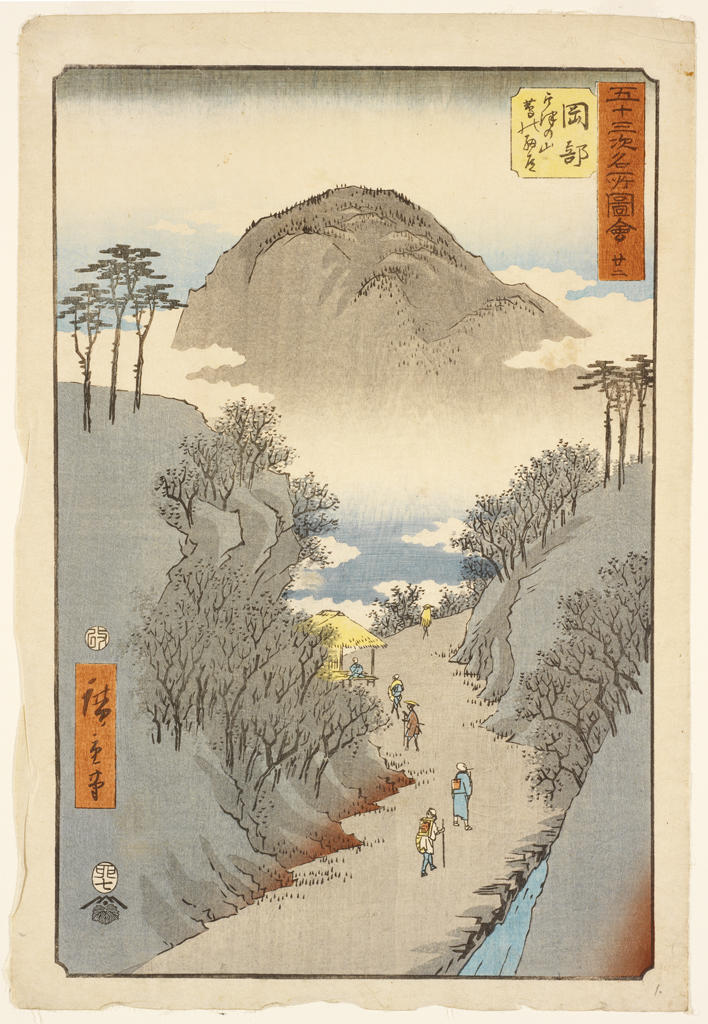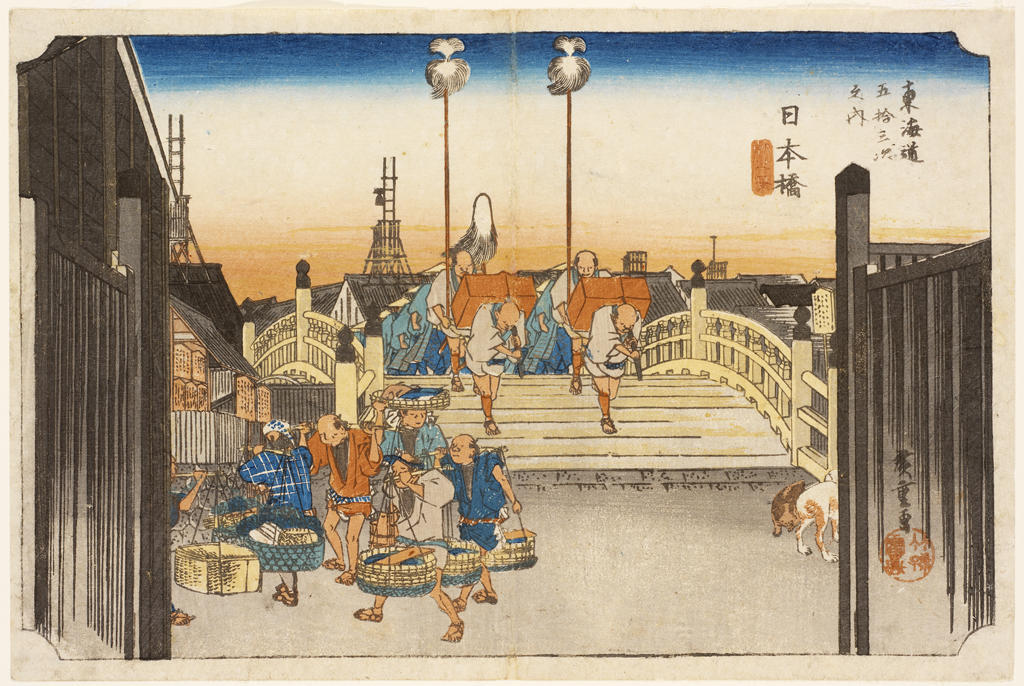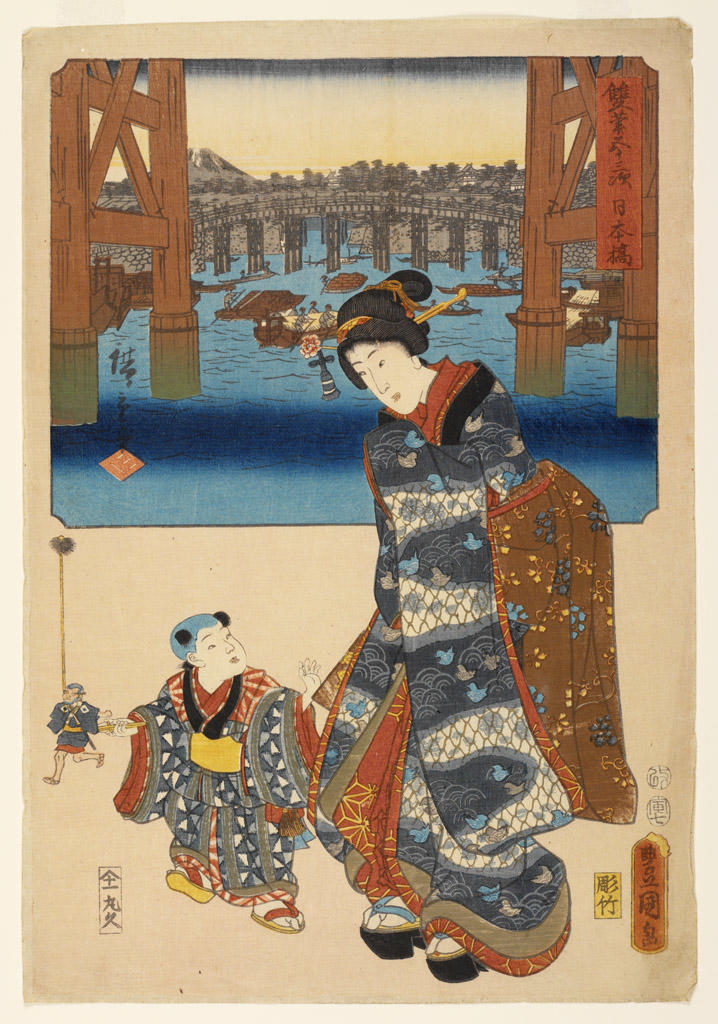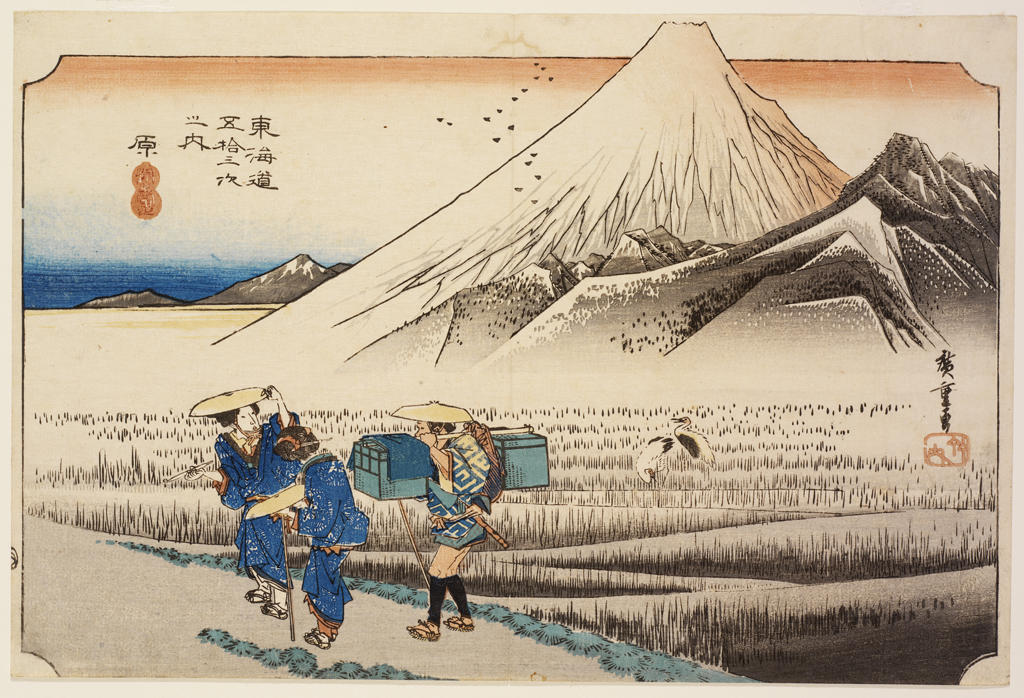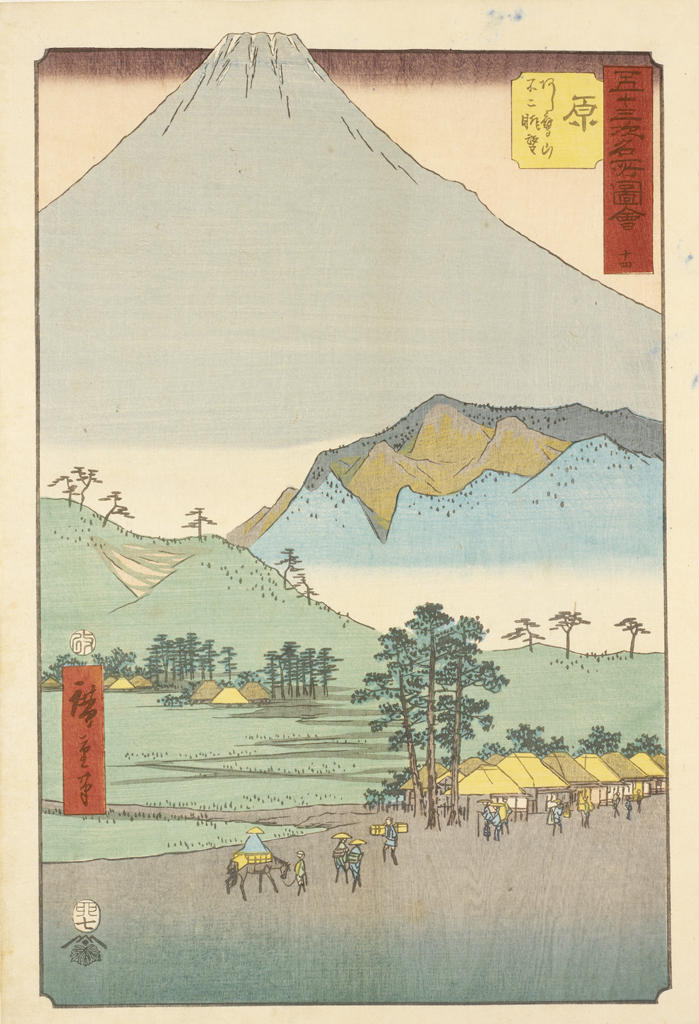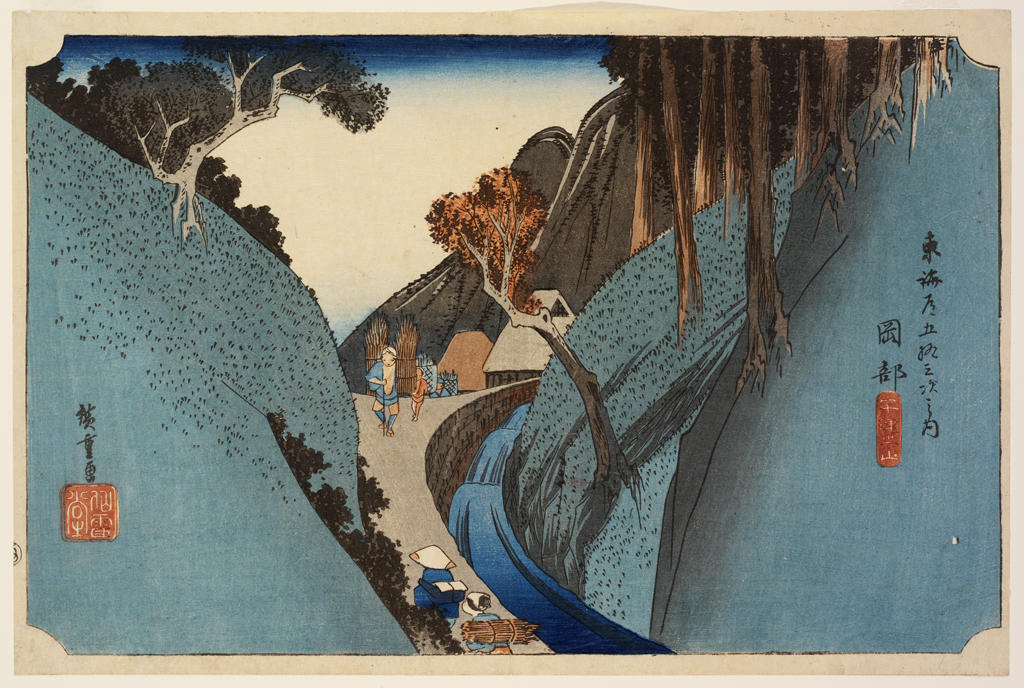“Wish you were here …” – Hiroshige was the title of a Japanese print exhibition that was curated by RISD students and on view for three hours in Fall 2014 in a classroom at the RISD Museum. Originally an art history class project, the exhibition has since become the foundation for the gallery rotation opening in one of the Museum’s Asian art galleries in May 2015. Tested thrice in the past two years, this “curatorial” approach to art history instruction puts emphasis on active learning from objects. It also provides a real-life opportunity for RISD students to practice a wide range of activities that together constitute the work of an art historian.
The RISD Museum’s collection of ukiyo-e prints numbers over a thousand designs and is quite representative of this vibrant form of urban art that flourished in Japan in the 18th and 19th centuries. Capturing the spirit of the times in images of fashionable courtesans and dramatic Kabuki theater actors, evocative nature views, and vivid illustrations of historic legends, ukiyo-e woodcuts—with their distinctive style of strong linearity and bright, sensitive coloring—are exceedingly influential art forms. Most innovative Western artists responded with great enthusiasm to ukiyo-e stylistics after they encountered mass-produced prints in the 1850s, following the end of more than two centuries of Japan’s self-imposed isolation. Ukiyo-e prints became an important inspiration for the development of Impressionism and Post-Impressionism and for the evolution of Art Nouveau painting and design, and the style continued to influence different spheres of art throughout the 20th century. Ukiyo-e aesthetics retains its compelling relevance to this day: the topic invariably attracts a highly diversified student population, with the broadest spectrum of majors present.
Although the student-curated ukiyo-e print exhibitions at the RISD Museum are typically held only briefly, they are done “for real” and include all the elements that comprise curatorial practice today. With the instructor’s guidance, students choose prints for the show from the electronic database, examine prints firsthand during several prolonged Museum sessions, and decide on the topic and the overall direction of the study. Students then explore the prints from every possible angle, coming up with comprehensive formal analyses. Through extensive reading, they meticulously research every detail to reveal historic and cultural connotations. Museum sessions are complemented by classroom slide lectures in which the instructor surveys the history of ukiyo-e and introduces major issues existing in this art form. For their curatorial assignment, students are organized in small groups of two or three members to ensure exchange of observations and ideas and to facilitate a thorough and responsible approach to the work. While most of the students focus on individual prints, several groups investigate general issues pertaining to the exhibition theme at large. At every classroom meeting, groups report their progress to their peers. The exhibition title is finalized in the process of open discussions. Toward the end of the semester the findings of each working group are recorded in the form of essays, which will later be assembled in the exhibition catalogue. The next step is distilling the catalogue entries into short didactic wall labels appropriate for the gallery. Students make the necessary design decisions regarding the layout of the individual object labels and the overarching introductory label; they also design the exhibition posters [Ills. 1, 2], invitations, the catalogue cover [Ills. 3, 4], and the catalogue itself. Occasionally, students try their hand at souvenir production [Ill. 5, compare 6]. In the best academic traditions, at the time of the “opening” of the exhibition, a symposium is held with all students presenting their research. Guests include RISD faculty and RISD Museum curators, adding to the scholarly authority of the event.
Every time this course is offered, a new topic is chosen and a new group of prints is selected, sometimes from among those that have never been on display at the RISD Museum. On one occasion (Spring, 2013) the class looked into co-authorship in ukiyo-e prints design by two leading Utagawa School artists, Hiroshige and Kunisada, in the compositions from the series Tokaido by Two Brushes (1854)[Ill. 7].
Another time, students explored the masterpiece series of eight prints by Hokusai—Journey around the Waterfalls of the Provinces (1833)—created by the artist at the zenith of his talent [Ill. 8].
This past fall, the decision was made to do a comparative study of Hiroshige’s earliest (1833–1834) and latest (1855) representations of the same post stations on the Tokaido Road, Japan’s main governmental highway between the shogunal capital of Edo (now Tokyo) and the imperial capital of Kyoto. For the duration of the semester, the entire class plunged directly into the midst of the Tokaido world, watching daimyo processions, mixing with all kinds of travelers and local residents, learning their customs and manners, trying out various travel modes and roadside services, exploring every bend of the road in winter and summer, at dawn and dusk, in sunshine and violent storm.
The project was much more than a foray into the history of material culture, enriching as it was. Hiroshige continuously worked with the Tokaido theme, dedicating to it more than 20 print sets, experimenting with formats and sizes. Our comparative lens revealed quite a significant shift in Hiroshige’s vision of the world and, correspondingly, in the message of his works. Hiroshige’s horizontally oriented Tokaido compositions created by the artist in his prime tended to be lively close-up views, inviting the onlooker to partake in the experience of the place. In his late 50s, Hiroshige started showing consistent preference for the vertical orientation of his images, making them timeless distant vistas with miniscule-scaled human activities seen from the perspective of his advanced age and wisdom [Ills. 9-10; 11-12].
“Wish you were here” is the exclamation of a traveler overwhelmed by new sights and desiring to share the excitement with those of kindred spirit. The students who authored this project wholeheartedly address these words to the exhibition visitors. They are grateful to the RISD Museum for the exciting opportunity to work closely with the original works, and are looking forward to taking part in the educational programming associated with the rotation.
Elena Varshavskaya, PhD
Senior Lecturer, History of Art and Visual Culture, RISD
